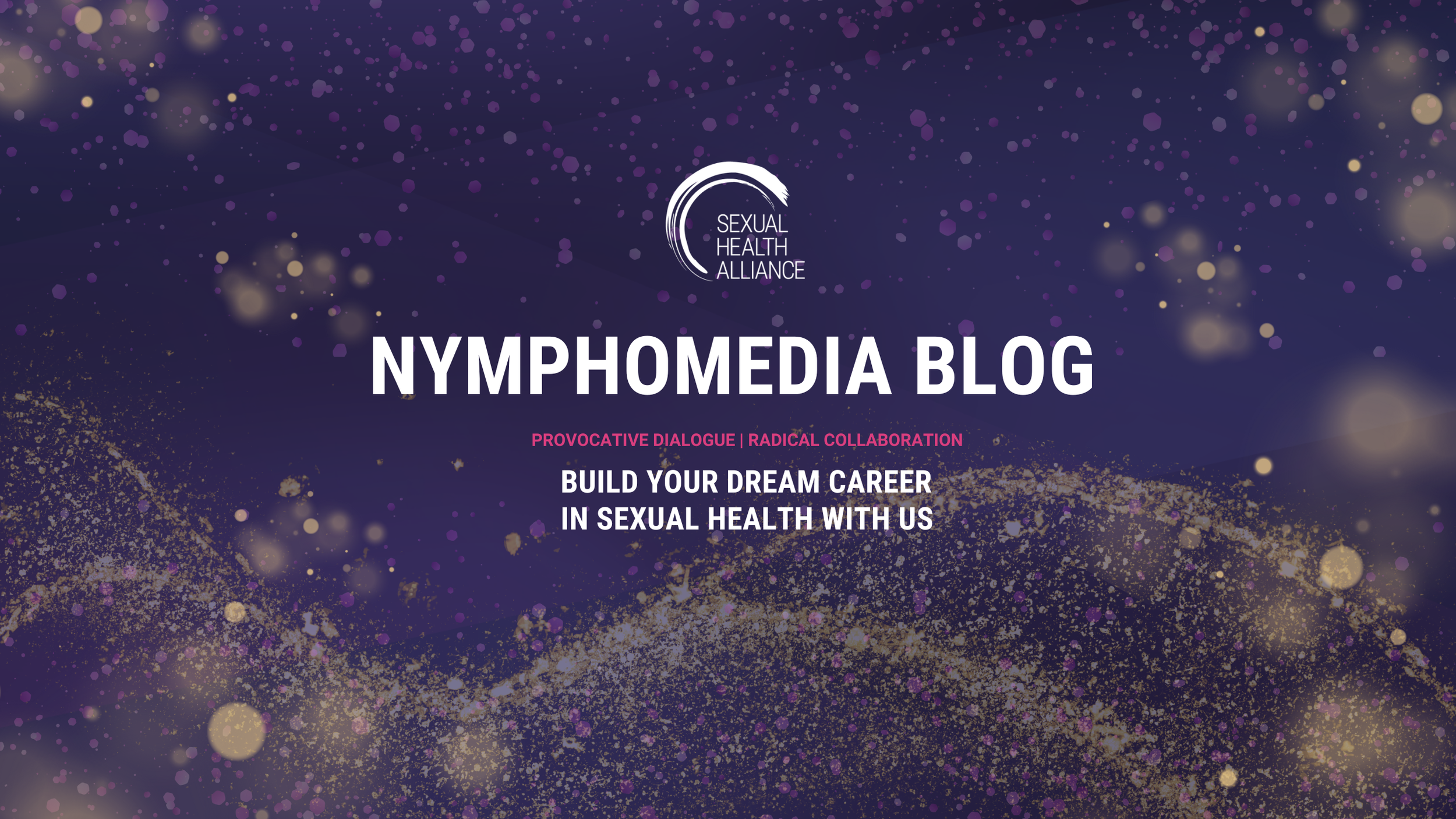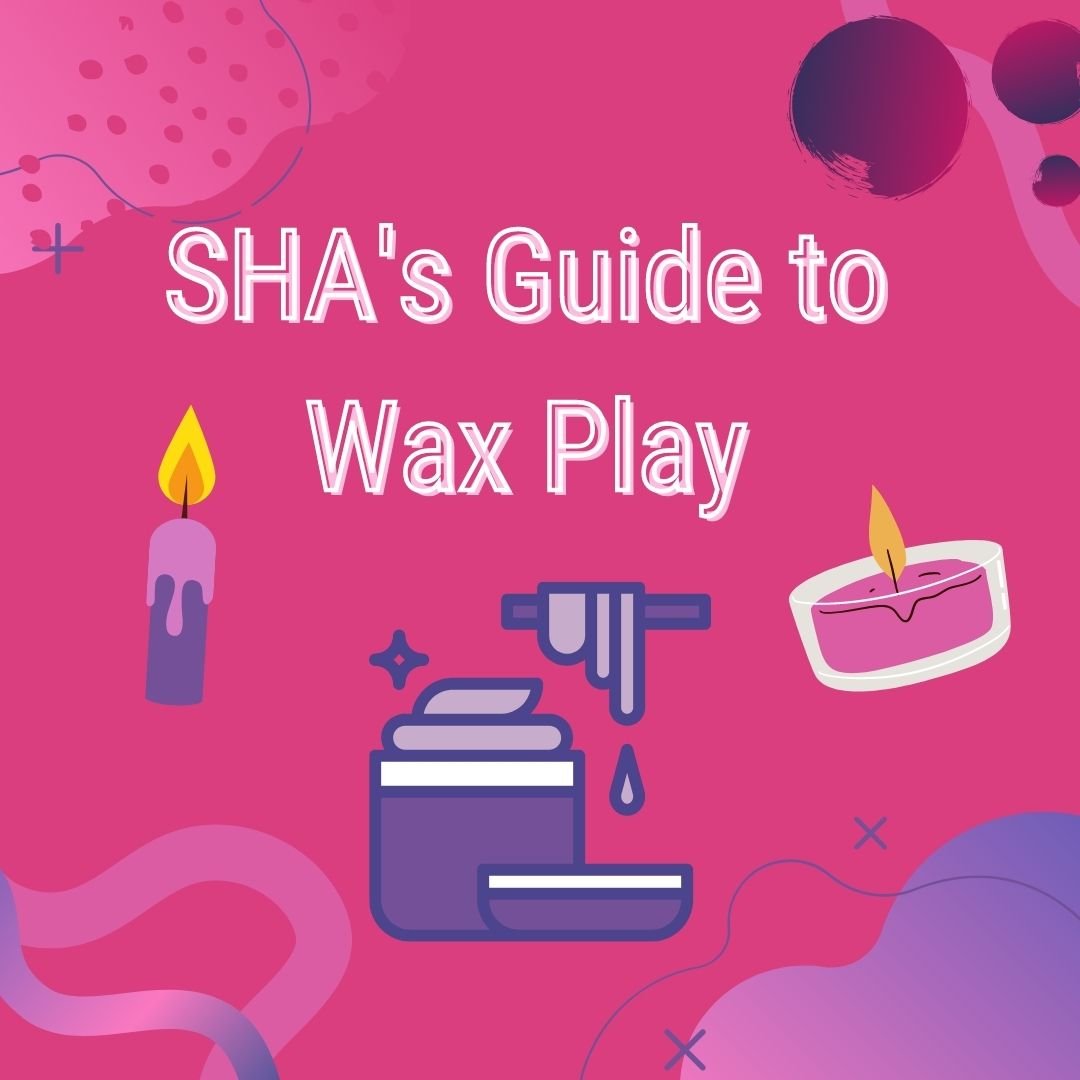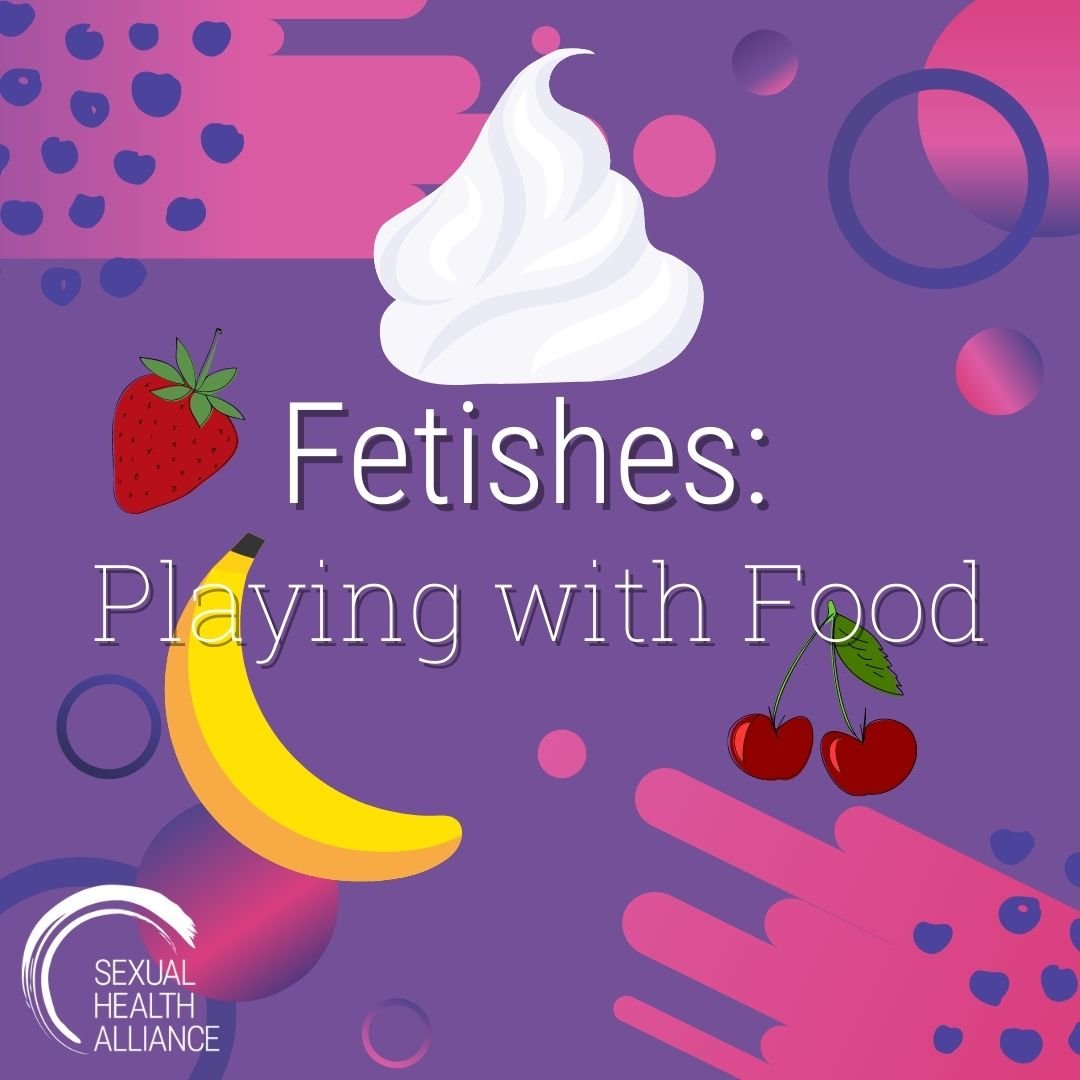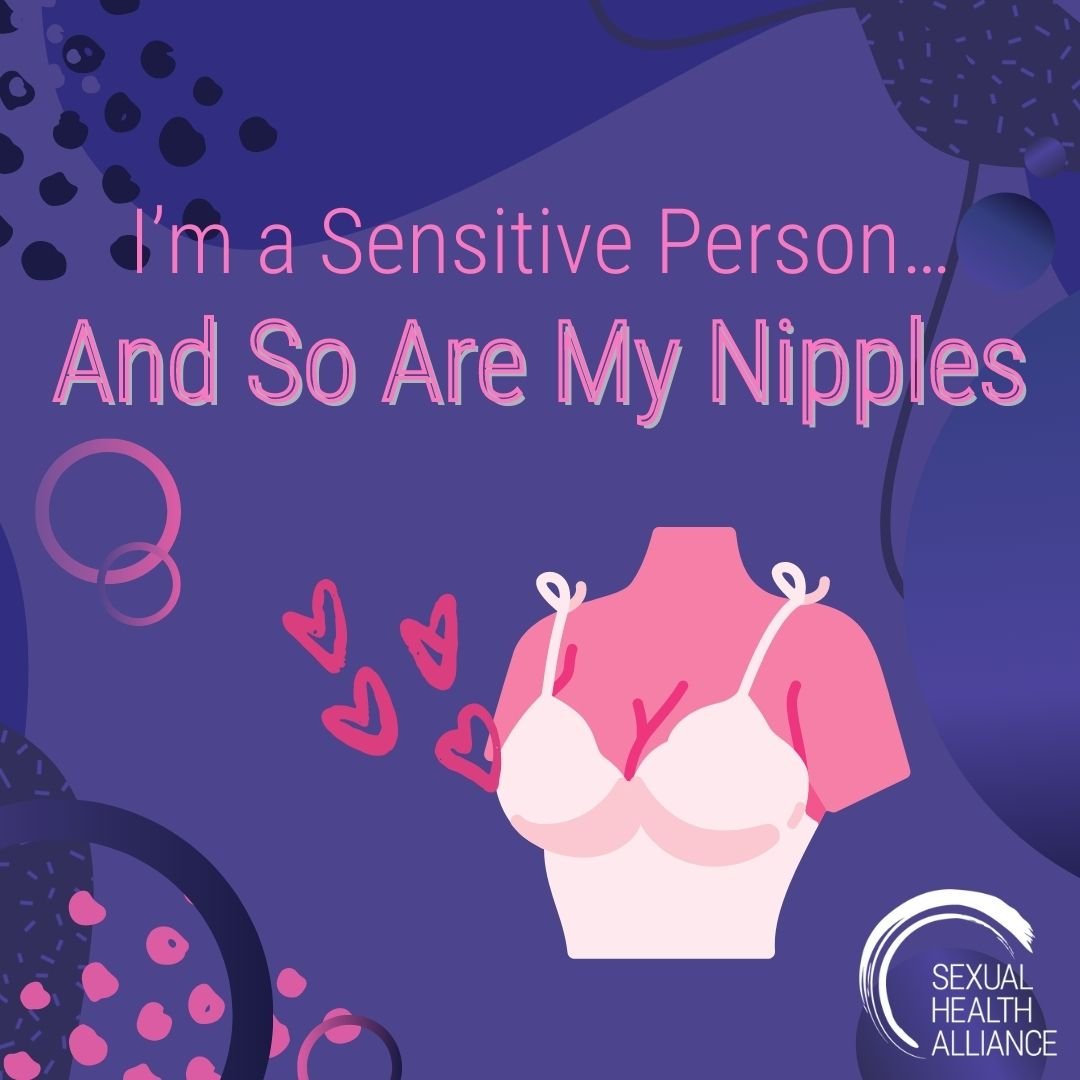Most of us have been consuming porn since our teenage years, around the time we first discovered the joys of masturbation. Most of us also probably frequented porn sites with no paywalls like Pornhub or Xhamster. These porn sites are problematic because they often feature videos that are produced unethically. Unethical porn can signal a plethora of different things. For example, on sites like Pornhub performers are usually not compensated for their videos, and often times are forced to fake their pleasure for the camera. The porn is not authentic and it often time plays on male-gaze stereotypes in which the videos are centered around male pleasure rather than equal pleasure for everyone involved in the scene. When you use a website like PornHub to view un-paywalled porn for free—especially the kind made by performers who run their own business—you’re stealing from people whose careers are deeply stigmatized and whose jobs are, if not criminalized, heavily regulated and censored by puritanical legislation designed to keep sex workers in unsafe and unfairly compensated working conditions. One way to combat this injustice faced by sex workers is to start paying for your porn! Pay for porn sites follow a more ethical framework for producing porn and allow the performer to have more control over the scenes they produce. Moreover, paying for porn sites allows for fair compensation for workers. If audiences start consuming their porn in an ethical fashion, both the porn industry and the stigma surrounding it would improve.
Ignorance is Not Bliss: Florida's "Don't Say Gay" Bill
On March 8th, 2022, in the Florida Senate, legislators joined the state House in passing a bill that serves to prevent LGBTQ+ instruction in lower education. The “Parental Rights in Education” bill has been referred to by its opposers as the “Don’t Say Gay” bill, noting the strict prohibition of discussing sexual orientation or gender identity in any Kindergarten through third-grade classroom. The bill also limits discussion of sexuality to “age-appropriate content” which can be applied to all grade levels to restrict LGBTQ+ topics for discussion. Republican and other conservative supporters claim that this bill is designed to keep parents informed about the education of their children, but its isolation of LGBTQ+ identity is a clear signal of discrimination on the basis of gender and sexual orientation.
Florida’s state education curriculum does not include these topics as a part of their comprehensive health education, so the law would mostly function to set the precedent that spectrums of gender and sexuality could be seen as inappropriate subject matter for children. Additionally, it intentionally does not provide teachers with a welcoming and comprehensive answer to questions that may be asked by students about these topics. Without this programming, teachers must choose to not answer such questions or to share personal beliefs with students, which may be even more harmful to children. This bill recently shifted to specifically target lesson plans, leaving the legality of the discussion up in the air. As if that wasn’t enough, this bill would allow parents to sue teachers and schools who speak about these identities.
What To Expect in Sex Therapy
Many people may experience problems with sex at some point in their life, though some issues can be resolved without the need for intervention, others may find they need additional support from a certified sex therapist. Reasons for going to a sex therapist can include lack of desire, difficulty having an orgasm, pain during sex, inability to have penetrative sex, difficulty keeping an erection, and premature ejaculation. This article aims to give a brief outline as to what can be expected during a sex therapy session. Whatever difficulty it is you are facing, be reassured that you are not alone.
Be sure to go into your first sex therapy session knowing you may discuss your sexual health, relationship, and trauma history, states Gretchen Blycker, a sex and couples therapist. Especially in your first session, your therapist will need to get a sense of the context that is surrounding your concerns, this can and may include the discussion on topics you may find uncomfortable. Sex therapy can look similar to traditional therapy forms, but with a direct focus on sexuality in addition to and in conjunction with the uneasiness or worries that brought you to therapy. “Generally, when attending a therapy session with sexuality as your primary concern, you can expect your therapist to gently inquire around what has been bothering you, and what you would like to be different,” says Laura Federico, licensed clinical social worker.
Hit Me Baby One More Time: Discussing Impact Play
Impact play can be summarised as a “practice where one partner strikes another with their hands or toy for sexual gratification.” Examples of this range from the commonly shown spanking, whipping, or flogging. This article will give a basic overview of the science behind enjoying spanking, how to do it safely, and other tips and tricks. A strike on your butt, upper thighs, or other erogenous zones can stimulate your skin's nerve receptors and can trigger the release of endorphins and dopamine. Sanda Lamorgese, author of Switch: Time for a Change further states that for some, the taboo vibes of getting spanked can also be a turn-on.
Note first that impact play does NOT have to be extreme—you have the right to define the intensity of the action to whatever you are most comfortable with. Since impact play falls under what is considered “‘risk play’”, it is imperative that it remains a constant consensual activity with you and your sexual partner—it should never happen without being discussed prior, and the intensity should, under no circumstance, go beyond what you have stated you are comfortable with. The spanking or “punishment” scene in 50 Shades of Grey shows the importance of respecting limitations and allowing a set moment to have consent and boundaries discussed before starting impact play. If you are unfamiliar with the book or film, I would firstly not ever recommend it. But for those curious, the scene involves “submissive” Anna to be seen distressed and visibly upset, whilst “dominant” Chrisitan continues to spank her with a belt. There are many healthy and ethical ways to combine sex and pain, but using 50 Shades as a sex-manual is in no way going to give you an ethical or genuinely useful guide. To see the other ways that 50 Shades has depicted BDSM in an unrealistic or true manner, check out our lovely Alyssa’s blog!
Consent is by far the most important element to safely carrying out impact play. An additionally important concept is on what part of the body should receive impact sensations. Candice Smith, intimacy coach and cofounder of the KinkKit suggests you start with the buttocks and inner thighs due to the protective fat and muscle. Other parts of the body have thinner skin or cover vital organs that can be damaged with less effort. Daniel Saynt, founder of NSFW (The New Society For Wellness), explains that you should also make sure to avoid the spine, tummy, and lower back, as well as the ears, head, feet, and calves, should further be avoided. You can find a graphic of where is and isn’t okay to hit here!
Saynt further suggests that in terms of consent and negotiation, you may want to enact the stoplight system. “During the stoplight system, ‘red’ signifies stop and care, and ‘yellow’ signifies slow down.” Alternatively, some may find they lose their ability to speak during a moment of sensation overload, this is why establishing a non-verbal safety word may be helpful. Examples of this include tapping the bedside table three times or clapping your hands four times. This is especially useful if you are combining impact play with something like a ball-gag which restricts your ability to speak. Finally, before taking part in impact play, you may find it useful to create a “pain scale.” This involves using a number scale to communicate how much impact you can or want to take. “Begin with a few light swipes and then have your partner tell you the number of pain they’re feeling, plus what number they’d like to get to in that scene,” says Saynt.
WAYS TO PRACTICE IMPACT PLAY
If you are brand new to impact play, you can start by practicing some smacks on a pillow using a flat palm. Get used to the momentum and strength you naturally give. Then move on to lightly spank the fleshy part of your partner’s body. Once again, take this slowly and communicate between each slap.
One of the most common ways to practice impact play is slapping. This involves a “hand spanking” that happens on body parts other than the buttocks, places that can be slapped can involve the thighs and face cheeks. Make sure to start with light slaps before moving on to stronger ones, as if you go too hard with this, there is the potential to knock out your partner.
Spanking not only can be done with your hand, but implements like a belt, paddle, or slapper. These implements can bring along different sensations, a paddle may give a ‘thuddy’ sensation, whereas a cane feels more like a sting. Note that using a cane aggressively can result in welts—go light for your first time using it and slowly work your way up to more impactful strikes.
Punching and kicking are other slightly heavier ways to practice impact play. With these methods, make sure to keep it light. Furthermore, make sure to stay away from the face, spine, or any other major organs.
Flogging and whipping are deemed to be a more intense form of impact play, and generally should be reserved for those with skill and experience. Whipping especially should be reserved for those with experience, if carried out incorrectly—or correctly depending on what you are seeking—it can result in open gashes on your skin.
After any form of impact play, aftercare is a must. Not only should this include physical care such as icing any bruises or rehydrating, but emotional. Make sure to debrief what just happened, share what you liked or perhaps didn’t like, and communicate how you are feeling at that present moment.
Due to impact play being a form of risk play, it is crucial that you keep yourself regularly educated on how to carry it out. There are a variety of online communities like FetLife or Mojo Upgrade that can provide educational videos and resources. Be honest with yourself about your limitations of knowledge about impact play, then take time to dive into these resources and fill those gaps! As always, consent and negotiation are imperative for all impact play to be carried out in the safest manner possible—know that some people may love impact play, others may feel unsure about their preference, and others may want to avoid it all together—and every one of these is a valid feeling! If you’re interested in learning more about the world of kink, check out SHA’s Kink-Informed Certificate program taught by the Supernova of Kink herself, Midori.
By Stephanie McCartney
Learning To Redefine Sex
Time and time again, the sex education system has failed us. Schools throw around the word “‘sex”’ but only ever seem to use it in the context of penetrative means penis in vagina sex. This then can lead to the false assumption that the only thing that counts as sex is penetration, this is absolutely not true at all. Sex is truly what you define it to be, some may still choose to decide that penetrative sex is their personal definition, and that is okay! Others may find “outercourse,” more appropriate for their boundaries. There is additionally the concept of “‘othercourse’” which briefly speaking, refers to “creative play that is not limited to, or focused on intercourse.” Othercourse also makes it clear that an orgasm is not the end goal, which works well in relieving performance pressure whilst allowing the opportunity to explore your and your partners’ bodies. Sex can therefore be seen as an umbrella term, my definition of sex may be different from yours— every view is valid!
I will be honest and say that it has taken me a long time to learn how to redefine sex. For 19 years I was under the belief that the only thing that could count as sex for me (a heterosexual female) was penetrative penis in vagina. The typical university experience didn’t do me any additional favors. Games of Never Have I Ever in Freshers week (the first week of starting university here in the UK!) quickly turned into sexual inquiries and listening to embarrassing sex stories of these 11 strangers immediately led me to question why I hadn’t had sex, concluding that there was something was wrong with me. There was and is nothing wrong with me, but discussion and representation of sex in the media only seemed to show penetrative sex, and didn’t even do a good job of realistically depicting that. Growing up in a generation surrounded by social media and technology, it is no wonder I feel the trap of having a narrow understanding of sex.
A Brief History of “Sex Addiction”
Sex addiction seems to make sense. Due to our society’s ingrained morals, we are told that too much of a good thing is bad, that this is addiction. From a young age, we are warned of the dangers of drugs and alcohol through programs such as D.A.R.E. We understand drugs and alcohol to be inherently bad because of the obvious negative physical effects. But sex? Is too much sex a bad thing? The American Addiction Centers seem to think so with this broad claim: “Like other positive, life-affirming behavior—eating, exercising, and falling in love—sex can become an addiction if the need for sexual gratification begins to take precedence over the needs, responsibilities, or values” (emphasis mine). AAC suggests that sex is “life-affirming behavior,” which certainly separates it from drugs and alcohol, and yet still asserts that sex can be addictive. Thanks to the reach of today’s media, many fear this concept. Fear and shame weigh down their sexual desires and too many believe they must control these urges, be the master of them rather than the other way around. Many seek treatment. But sex addiction is a question not easily answered.
Socializing Sex: Pornography on Twitter
In the ever-changing world of social media, Twitter has remained unique. This platform combines the influencer fame of Instagram with the dialogue and anonymity of Reddit or Tumblr, while still reaching a wider age range than other sites. Unlike its similar platforms, Twitter has remained somewhat unfiltered; it’s no secret that X-rated content is easily accessible there. This comes as a stark contrast from sites like Instagram and Facebook, which take a hard stance against adult content, removing posts and banning users who attempt to share it. Twitter has also been reported as a major news source for its younger users, attributed to its real-time release of information from multiple sources. This uniqueness is where Twitter has gained its popularity, but with increasing Internet regulations and the trends of other social media sites, will it remain this way for long?
Of course, Twitter is not the only site to have accessible pornography, but what sets it apart is its simultaneous influencer platform. Twitter boasts a high percentage of celebrity users, both those of established fame and those who gained popularity from their accounts. For this reason, the site draws fans who feel intimately connected to their favorite person. This close contact between celebrities and fans can potentially blur the lines of appropriate relationships, especially considering the age difference.
Stones and Sex: Using Crystals And Other Methods To Balance Your Sacral Chakra
Chakras are simply nerve bundles or energy centres that are distributed throughout the body–every human has all seven chakras, regardless of their belief system. These specific points are associated with different physical and emotional functions in your body, which can affect your overall well-being. Starting from the pelvic floor (or the Root Chakra) and working our way up, the second chakra, the sacral chakra, is referred to as the “‘sex chakra’” due to the way it is believed to improve sexual intimacy. Arthur O’Malley discusses in Activation of the Chakras that the sacral chakra is believed to be the centre for both relationships and social interactions. It can also be seen as the centre for dealing with issues related to the inner child aspects of our personality.
In Hinduism, it can be believed that this chakra is governed by Parvati, the goddess of fidelity, fertility, and power. The sacral chakra is also associated with the water element and the colour orange, so if you are finding yourself being drawn to orange crystals, this could be your body's way of telling you to pay attention to your sacral chakra! It is also believed that the chakras exist on earth, with the sacral chakra being located at Lake Titicaca, with the sacral chakra’s element being water, it would make sense that it is located in a large body of fresh water.
A Brief Look at Black Women and Pornography
I’m not the first person to say that pornography can be both unethical and harmful. Mainstream sites such as PornHub or XVideos lack regulation processes and safety checks on the videos released, which has led to videos of sexual assault, or videos involving minors being made available for the public. These mainstream sites further cause harm by allowing videos that perpetuate racist stereotypes to be released, and are evident and reinforced by the “categories” in which videos are organized. Examples of this include Big Black Cock (BBC), Ebony, and Big Black Woman (BBW). Often these videos are accompanied by hashtags about violence such as #roughfuck, #brutal, #drilled. On a google search of “POC Porn,” pornhub is of course the first site suggested. When (reluctantly) clicking on the site, the first video was labeled “this bitch got my dick in her arse then I gave her a good facial.” How delightful…
This article will open with a discussion on a paper written about the negative implications of pornography for Black women, especially when taking into consideration of racial and social politics. Then, it will bring in readings on ethical pornography— discussing what is needed to make porn ethical as well as suggestions of sites. Finally, it will review how BIPOC pornography can be beautiful and healthy.
Jewel Amoah, feminist and human rights scholar, takes a look at the implications pornography has against Black women. She opens with a definition of what pornography is, “pornography is not simply the exhibition of sex, but the exhibition of illicit sex”.
The Male Gaze in Modern Cinema: Blue is the Warmest Color
In most films, the male gaze controls the narrative, ultimately putting forth the message that women are subordinate to men and that their agency is reduced to that of an erotic subject with their value attributed to how their body pleasure male viewers through its appearance. The male gaze presents the female form as a sexual object for men to quite literally consume through viewing. This phenomenon is present in many popular films portraying both hetero and homosexual relationships. Films that are marketed as queer films are actually filmed through the lens of the male gaze making it so that lesbian relations are constructed to satisfy the hetero male viewer. This is seen in the French film Blue is the Warmest Color (2013), a film that was once marketed as portraying authentic queer relationships. I believe this film puts forth the false ideology that queer women perform their sexuality for male viewing rather than take pleasure in it for themselves as evident through the obvious male gaze.
Talking to Your Partner About an STD Test
Discussing STDs can feel awkward to bring up, but it is crucial for you and your partner(s) to stay safe. Knowing that you and those you are in sexual contact with are healthy can further help to put your mind at risk, allowing you to enjoy sex more. We know it can be hard talking to your partner about getting or the results of an STD test so below is a guide to handle this delicate conversation.
The best time to discuss an STD test is before having any form of sex–even oral sex! – as STDs can be transmitted through any unprotected sex. When it comes time to have this conversation, talk with your partner about this in a place you both feel safe and comfortable. In a bed, right before having sex or outside in a public place is not an ideal spot, and talking at these times not only may make your partner feel uncomfortable, but push more pressure on them. Instead find a place that you both feel comfortable in, whether this means one of your gardens or even the staircase, this will make the conversation far easier. Planned Parenthood reiterates the importance of timing and placement. Pick a time where you won’t be distracted or interrupted, and choose a place that is private and relaxed.
What is a Healthy Relationship?
There is no golden rule to follow for a guaranteed “healthy relationship.” My needs in a relationship may be totally different from yours, and that is absolutely okay. There are, however, certain elements that are essential to a healthy and happy relationship that I will go on to discuss. I will mention that by no means am I a relationship therapist, but I can give you the rundown of several different sites and aim to give an overall explanation. Ultimately, studies and sites acknowledge that only you know what is best for you in a relationship, you know your boundaries and needs and should understand that it is important that they are met and respected. For a further guide on healthy relationships, check out Shelby’s piece on the six sexual health principles in which she explains what the principles are and why they are important in encouraging positive sexual health and a strong relationship.
Anything is Paw-Sible in the Kink Community: Discussing Pet Play
In the simplest terms, pet play is role-playing as an animal. There are no rules or limits as to what animal can be played out, though puppies and kittens are the most discussed and hence deemed to be the most common—you can be whatever you desire! This can extend to ducks, foxes, and even fantasy creatures. This article aims to explore the psychology behind pet play, understanding why people enjoy it; and will then go on to discuss ways that you can incorporate it into your life if that is something you are interested in.
Pet play is most commonly seen in the BDSM community, more specifically in a Dominant/submissive relationship. Typically, the Dominant takes on the role of the owner (or trainer in other circumstances) and the submissive takes on the role of the pet, taking on animal-like characteristics. Pet play can additionally happen in sexual and non-sexual ways. Some people may find that being a pony after a tough day can help them to distress, for others pet play allows them to have the opportunity to be playful and carefree in a way they normally can’t. Others may prefer pet play in a different circumstance. In a sexual context, pet play can allow the opportunity for bondage and humiliation.
Practice Safe Sexting with Your Robot Girlfriend
Regardless of relationship status, sexting, or texting explicit content including photos, is a super popular way to “get it on” from afar, with the convenience of needing only your phone and a bit of creativity. It can be a fantastic tool for long-distance folks, whether in a long-term relationship or something around friends-with-benefits. Even if you see your partner(s) in person regularly, sexting can be a way to open up your intimacy to new ideas and experiences. Yet, we are all familiar with sexting being unsafe and, at times, illegal. So with the ever-expanding repertoire of sexting apps, the question of how to ensure safety remains. There are so many different forms of sexting now, including texting, sending photos and videos, calling, video chatting, and more. Unfortunately, many of these tools are found on unsafe platforms where you risk device viruses and compromising your personal information. What has been missing from the Internet is a safe way to experience the world of online sex. While there are many opportunities to insist on safety, one option is using something like Slutbot, or an app to practice sexting as a skill within a controlled, safe environment.
Plan C: Abortion Pills by Mail
Most people have heard of the morning-after pill or the Plan B pill, which is designed to be taken up to 72 hours after unprotected sex or sex where there is a possibility of unwanted pregnancy.t. Not as many people, however, have heard about the abortion pill or the Plan C pill. Plan C has been used by millions of people across the world for the past three decades. These abortion pills work best in the first 11 weeks of pregnancy; using Plan Clater in pregnancy will be more painful and less effective. The risk of complications also goes up as the pregnancy grows. One risk associated with the pill is that it may not be effective in ending the pregnancy, especially if it’s taken later in the pregnancy. It’s recommended to take a pregnancy test 3-4 weeks after taking Plan C to ensure its success. If the test is positive, you should see your medical provider guarantee that the test is a false positive due to the presence of pregnancy hormones. Another risk associated with the pill is if an individual is having an ectopic pregnancy. In this case, the abortion pill will not work and the individual will need medical attention. This is why it’s typically recommended to take a pregnancy test to ensure that your body is healthy and rid of the pregnancy. With these risks in mind, studies still show the Plan C pill to be 98% effective at ending a pregnancy. Also known as "medication abortion," the abortion pill is typically a combination of two medications: Mifepristone and Misoprostol. It involves taking a mifepristone pill first, followed by misoprostol pills 24 to 48 hours later. This is the most effective method of medication abortion. This is the type of abortion with pills is provided by clinics like Planned Parenthood and recommended by the American College of Obstetricians and Gynecologists. The other type of abortion pill is one that contains only Misoprostol; though this method is less effective, as the World Health Organization endorses the use of misoprostol alone for early abortion when mifepristone is not available.
Fetishes: Feet, the Hands of the Legs
When discussing sexual fetishes, many are quick to imagine the foot fetish. Though feet are one of the more common fetishes, any body part can be (and is!) fetishized. There’s a name for this phenomenon: partialism, which refers to the particular sexual interest in a body part. Partialism falls under the category of paraphilic disorder, which refers to sexual attraction to animate objects or specific situations outside of the normative. Paraphilia is sometimes referred to as a disorder, but I would caution you away from this term. These sexual interests are not dangerous unless they cause someone to harm themselves or another, and the term “disorder” connotes something that must be changed. Remember, even LGBTQ+ attraction was considered a disorder until 1987. Partialism is actually distinguished from fetishism because fetishes often center around inanimate objects while body parts are still a part of human beings.
While foot fetishes (also known as podophilia) are some of the most common, there are a plethora of other options: hands, hair, eyes, belly buttons, ears, and armpits are also included. Breasts and buttocks are too, but a fetish for these go far beyond the typical desire for them during sex, and actually involve intense, targeted arousal even outside of sex. Originally, Sigmund Freud hypothesized that people experience attraction to feet because they take a somewhat phallic shape, but today that has been debunked and replaced with more brain-oriented approaches.
SHA's Guide to Wax Play
Wax play is seen to be a form of edge play due to the way you are literally playing with fire. Using candles does hold the risk of causing bodily harm to a person, hence it is on the ‘edge’ of what is considered within typical safety guides. Due to the high risk that comes with wax play, it is imperative to be knowledgeable of the safety precautions you must know before wax play. Make sure to have a cool cloth, a first aid kit, a fire extinguisher, and access to water all nearby at all times. Emotional safety is an additional thought that should be followed through. Giving aftercare to your partner after any play is a great way to help them cope with the sudden drop in hormones after sex, which can result in negative feelings. This could involve hugs, cuddles, or in this specific situation, helping to remove the wax it has cooled. For other ideas, feel free to check out my piece on aftercare which has a whole host of ideas! If you are still feeling unsure, getting formal training could help to ease your nerves. Attend a course or workshop on wax play to learn more, the majority of these are split into two sections: one learning about theory, and the other being more hands-on/practical.
Fetishes: Playing with Food
Sitophilia is the sexual desire for situations involving food. This fetish, also known as “food play” is a relatively common practice, especially considering the scope by which you can define “food.” Recently, this practice has been known as “sploshing,” a subcategory of the “Wet and Messy” fetish which consists of covering yourself or others in non-bodily liquids. Food play is more commonly depicted in media and film than other fetishes. In the 1999 film Varsity Blues, a character covers herself in whipped cream, with cherry nipples. In 50 Shades of Grey, the characters lick ice cream off of each other. While food play is definitely considered a fetish, it has been normalized in mainstream media, more so than many of the other still quite common fetishes.
The draw to experiment with food play seems to come from a number of factors. First, using these items provides tactile stimulation, adding an element of texture to the sense of touch. There are also ways to play with temperature, which can provide additional stimulation. Food play carries the notion of being “taboo” because we are taught that food is not to be played with. Surprisingly, food and sex are closely related in terms of brain function; they each satisfy a biological urge, so combining the two supposedly heightens these experiences. Certain foods are even thought to heighten sexual experience when consumed, such as oysters or chocolate. These foods are called aphrodisiacs, and are commonly referenced in media as the best foods to eat on a date. Food play may also be connected to BDSM, where the messiness of the food serves to humiliate or victimize the submissive.
I’m A Sensitive Person… And So Are My Nipples
I’m just going to come straight out and say it, I LOVE my nipples being played with during sex. Unfortunately, I didn’t realize this until just over a year ago, but making that discovery has made a whole world of difference.
Mainstream pornography seems to suggest that the only way a woman is able to orgasm is by stimulating the clitoris (though I would debate mainstream pornography does a bad job of even showing this). However, there are multiple erogenous zones such as ears and the nape of the neck that, when stimulated, can generate a sexual response. The nipple is an (unfairly) ignored erogenous zones, and due to the way each nipple has hundreds of nerve endings, it can make them super sensitive to touch. Scientifically speaking: when the nipples are stimulated, they shoot off sparks into the genital sensory cortex. In layman's terms, this is the same area of the brain that is aroused by vaginal or clitoral stimulation. Whilst it is possible to have an orgasm by nipple stimulation at any point, they are thought to be even more intense during menstruation because the hormonal changes can increase breast sensitivity and tenderness.
History and Benefits of Legalizing Sex Work
The term prostitution dates back to 2400 BCE and is referenced as an “occupation” in the Bible—we’ve certainly come a long way since then. Now, in 2022, prostitution exists in many forms that would have been unimaginable by its first practitioners, especially with the rise of online sex work over the past decade. Recently, we have shifted the language we use to describe this industry from prostitution to sex work. The term “sex work” acknowledges it as a profession while removing some of the stigmatization and connotations of immorality that the term “prostitution” carries. Now, sex work happens on a global level, at all hours of the day, and across many platforms.
Many of us imagine sex work as it is portrayed in the movies (think Pretty Woman) with feminine, cisgender women standing on street corners, waiting for a “John” to pick them up. In reality, even this in-person form of sex work is much different than its media image. In United States history, sex work has been a significant part of many historical events, although it has been pushed to the back of the narrative. Stonewall, the uprising at the center of the fight for LGBTQ rights in 1969, was an example of this. From the community of LGBTQ+ and people of color in attendance, many were sex workers, though their stories were hidden from the narrative because of the stigma around their work. Aside from street sex work, brothels and escorting are also common forms of in-person sex work.























